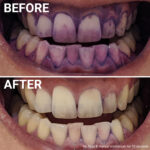
Good oral hygiene practices are essential for the prevention of caries and periodontal disease. A patients ability to maintain effective toothbrushing and interdental cleaning is a fundamental element of this. Provision of patient specific oral hygiene instruction from dental professionals is regularly provided and plaque disclosing methods may be used to demonstrate plaque. This may help educate patients and provide influence their motivation to achieve improved oral hygiene.
The aim of this review was to evaluate whether plaque-disclosing (PD) methods, applied by dental professionals or at-home, combined with verbal oral hygiene instructions and brushing demonstration (standard OHI) lead to improvements in self-performed dental plaque control in comparison to standard OHI alone.
Methods
Searches were conducted in the Medline/PubMed, Cochrane Central Register of Controlled Trials (CENTRAL), BVS (LILACS and BBO), Embase, Web of Science, OpenGrey, Google Scholar, Clinical Trials.gov and Prospero databases with no restrictions on language or date of publication. Only randomised controlled trials (RCTs) were considered. Two reviewers independently screened and selected studies extracted data and assessed study quality using the Cochrane Collaboration’s Risk of Bias tool (RoB 2.0) with certainty of evidence assessed using GRADE. Because of methodological variation in studies meta-analysis was not possible.
Results
- 7 RCTs involving 430 patients were included.
- The studies displayed extensive heterogeneity.
- One study was at low risk of bias, 6 at high risk.
- 8 comparisons he adjunctive effect of plaque disclosing methods applied by dental professionals.
- 5 comparisons involved at home plaque disclosing methods.
- For interventions involving orthodontic patients 3 out of 4 comparisons showed significant improvements of gingival inflammation scores for patients instructed with plaque disclosing methods.
- 11 out of 13 relevant comparisons found no significant difference between techniques for dental plaque outcomes.
- The available evidence is of very low certainty.
Conclusions
The authors concluded: –
Plaque disclosing (PD) methods as adjunct to standard OHI should be considered in orthodontic patients. For those without appliances, PD methods can be used as an alternative. No conclusion can be drawn on the superiority of any approach (professional or at-home use) and further randomized clinical trials are needed to clarify this issue.
Comments
The use of plaque disclosing methods for oral hygiene instruction has been taught and practiced by dental professional for many years. It can be linked to the behavioural construct of feedback and maintenance. However, it is perhaps surprising that of the 3270 unique papers identified by the review authors that they could only identify 7 RCTs despite an extensive database search. While the earliest paper dates from 1973 four have been published since 2014 so it is disappointing only one of the studies was considered to be at low risk of bias. While the limited evidence does suggest some benefit from the use of plaque disclosing methods there is a need for well-conducted and reported studies with larger sample sies and longer follow up. The use of a common outcomes set reporting from studies in this area would also be beneficial.
Links
Primary Paper
Oliveira LM, Pazinatto J, Zanatta FB. Are oral hygiene instructions with aid of plaque-disclosing methods effective in improving self-performed dental plaque control? A systematic review of randomized controlled trials. Int J Dent Hyg. 2021 Feb 26. doi: 10.1111/idh.12491. Epub ahead of print. PMID: 33638295.
Other references
Dental Elf – 27th Jun 2016
Picture Credits
“Before & After – Manual Toothbrush – 10 Seconds” by electricteeth is licensed under CC BY 2.0

So if we take this as an example, there is 1 good paper out of the 3270. Of the 2,000,000 research papers published each year, then 612 may be of value? Makes you think.
Thanks for highlighting. Always interesting.